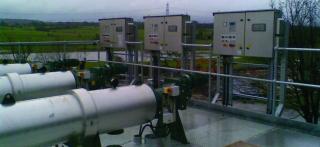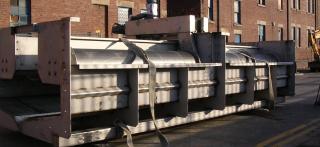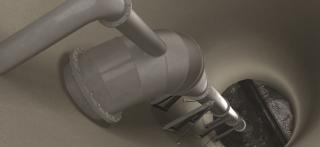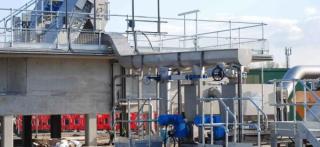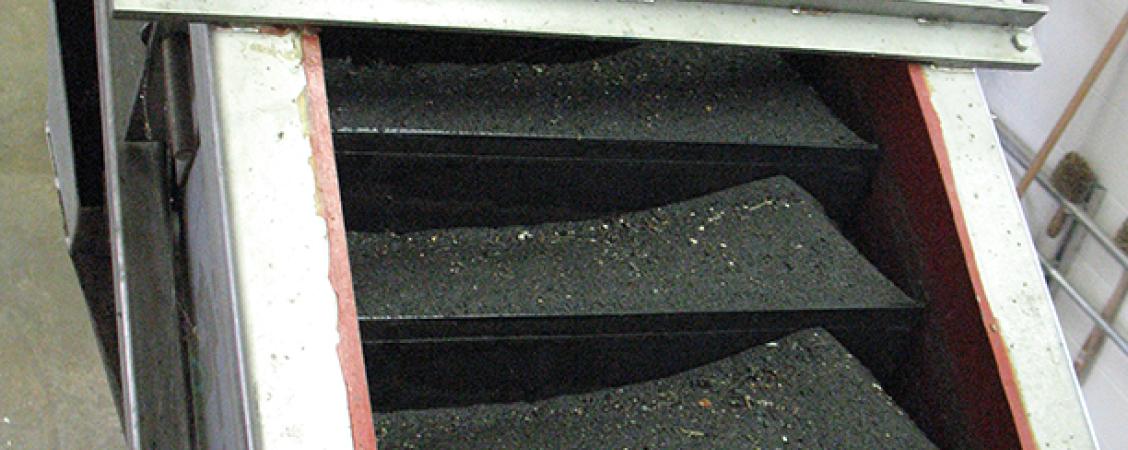
HeadCell grit removal protects Indiana WWTP with a wide range of flows
HeadCell® system allows Peru, Indiana's WWTP to keep up with a growing industrial base.
Situation
The city of Peru, IN, is a typical, small Midwestern city, where manufacturing and industry drive the local economy. At the end of the 20th century, this industrial city 75 miles (120 km) north of Indianapolis experienced a period of economic growth. However, this welcome growth came with consequences. The addition of a bacon processing plant and a large recreational vehicle manufacturer brought jobs to the area, but it also strained the resources of the city’s existing wastewater treatment plant.
Problem
The plant struggled to keep up with the increased flows. During heavy rains, the level of suspended solids in the plant effluent exceeded state safety limits. To solve this and other water treatment problems, the city opted to revamp the entire treatment plant, adding capacity and improving its processes.
A serious problem the city faced was grit. An excessive amount of grit was entering the plant from the aging collection system, especially during rainstorms. The facility, state of the art in the 1930s, had a Dorr Oliver grit rake and Cyclone degritter to remove grit. However, despite numerous rebuilds, the original equipment was no longer up to the task. The biosolids, which were land applied, were loaded with grit. At one point, a 3-4 foot (0.9-1.2 m) buildup of grit was cleaned from the primary clarifier.
An effective grit-removal system was an important criterion to the new design. City officials were strongly considering a solids reduction process to eliminate the need for land application of the biosolids. Advanced processes such as solids reduction must be protected from even fine grit. Another important consideration was the ability of the system to perform effectively at all flow levels, especially considering the wide swings in flows, with an average flow of only 3.5 Mgal/d (13.2 MLD) and a peak design flow of 26 Mgal/d (98 MLD).
The city needed to find a highly efficient grit-removal system to alleviate these concerns. Failure to effectively remove grit and other nuisance abrasives results in downstream plugging, loss of process space, and excessive wear on mechanical equipment.
Solution
The engineering firm Advanced Technology Services of Westchester, Ohio, proposed installation of a HeadCell® grit removal system, a technology capable of removing grit particles as small as 100 micron (μm).
This was very attractive to us because grit had been such a problem in the plant,” said Mike Dalquist, superintendent of Water and Sewer Management for Peru Utilities. “There wasn’t another system out there that offered that kind of efficiency in the same small footprint.
The HeadCell®, supplied by Hydro International, is a modular, multi-tray grit concentrator that removes grit with minimal headloss. The HeadCell’s stacked tray design provides a large surface area and short settling distances to capture fine grit particles. The HeadCell® evenly splits flows and eliminates the short circuiting that often degrades the performance of conventional grit basins.
The small footprint of the HeadCell® made it easy to incorporate into the new wastewater treatment plant headworks. The high efficiency flow distribution header evenly distributes influent over multiple conical trays. Tangential feed establishes a vortex flow pattern where solids settle into a boundary layer on each tray, and are swept down to the center underflow collection chamber.
These settled solids are continuously pumped to a SlurryCup™ grit washer and then to a Grit Snail® dewatering escalator. The SlurryCup™ uses a combination of an open free-vortex flow regime and boundary layer effects to capture, classify, and remove fine grit and other high-density fixed solids from grit slurries, and both primary and secondary sludge.
The grit underflow from the SlurryCup™ passes through a hydraulic valve, which provides secondary grit washing before being discharged into the large clarifier pool of the Grit Snail® which is designed to retain fine particles. A cleated belt moving 1-2 feet (0.3-0.6 m) per minute gently lifts captured solids out of the clarifier, allowing the grit to be dewatered without re-suspending it and reintroducing grit to the plant. Dewatered grit is carried to the top of the Grit Snail where it is discharged and ready for cost-effective disposal.
The cleaned grit typically contains 60 percent total solids with less than 20 percent volatile or organic solids. This approach minimizes the volume and weight of material hauled to solid waste disposal sites, and reduces odors and associated complaints.
Outcome
By February 2006, the new plant was online. At that time, Peru was able to retire its original treatment facility, which could only handle 4 to 6 Mgal/d (15 to 23 MLD). The city is now able to treat 8 Mgal/d (30.3 MLD), up to a peak of 26 Mgal/d (198.4 MLD). The increased capacity ensures that the system runs optimally, even during heavy rains.
The quality of the effluent that flows into the Wabash River has improved significantly—now measuring less than 10 mg per liter in total suspended solids, down from an average in “the high teens” and periodic spikes over 45 Mgal/d (170 MLD), Dalquist said. Before, plant sensors “almost always” detected ammonia in the effluent; now they hardly ever do, he said.
Moreover, the wastewater plant has a sustainable means to remove grit and keep the treatment facility running smoothly long into the future. It was so successful that this model treatment plant has now been emulated by other facilities across the country.
The volume of grit being removed has increased substantially,” Dalquist said. “The original plant typically was able to remove just half a cubic yard of grit, and allowed particles the size of coffee grounds to get past the headworks building. With the new grit-removal technologies in place, the upgraded plant is removing 1.5-2 yd3 (1.2-1.5 m3) of grit during average flows, and turning this into clean, dry, odorless material to be landfilled. We conducted inspections in the lab and found the grit-removal system performing exactly as advertised. Initially we had planned on installing a third component to remove inert material, but the new biosolids-reduction process and HeadCell systems are working so well we decided against the further technology installation. This alone saved us about $1 million.”












